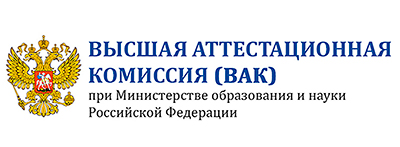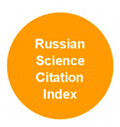Зависит ли вероятность рождения ребенка от уровня благосостояния и его субъективного восприятия в российских домохозяйствах: в поиске ответов на извечные вопросы
Аннотация
В данной статье используются микроданные Российского Мониторинга экономического положения и здоровья населения (РМЭЗ – НИУ ВШЭ) для рассмотрения влияния таких экономических факторов, как доход домохозяйства, зарплата женщин, факторов субъективного благополучия, удовлетворенностью жизнью и состояния здоровья, на вероятность рождения детей в России, которая демонстрировала длительное снижением на протяжении 1990-х годов, а в 2000-2015 гг. увеличивалась. Были получены следующие результаты: более высокие совокупные доходы домохозяйства способствуют деторождению, в то время как более высокая заработная плата женщин ассоциируется с более низкой рождаемостью; респонденты, удовлетворенные своей жизнью и хорошо оценивающие состояние своего здоровья, показывают значительное увеличение вероятности рождения детей. Большинство предыдущих исследований детерминантов рождаемости в России выявили, что доход не оказывает значимого влияния на рождаемость, но результаты, полученные в данном исследовании, позволяют предположить, что это могло быть связано с особыми обстоятельствами начала экономической трансформации в 1990-х годах.
Скачивания
Литература
Вишневский А. (Ред.) (2006). Демографическая модернизация России 1900-2000. Москва: Новое издательство.
Журавлева T., Гаврилова Я. (2017). Анализ факторов рождаемости в России: что говорят данные РМЭЗ НИУ ВШЭ? Экономический журнал ВШЭ, 21(1), 145-187.
Население России (1994). А.Г. Вишневский (Ред.) Население России 1994. Второй ежегодный демографический доклад. Институт народнохозяйственного прогнозирования РАН, Центр демографии и экологии человека. Москва: Евразия.
Подузов А.А., Кукушкин Д.К. (2000). Шкала эквивалентности как инструмент измерения уровня жизни. Проблемы прогнозирования, 4, 108-122.
Росстат (2008). Демографический ежегодник России. Москва, Росстат.
Рощина Я., Бойков С. (2005). Факторы фертильности в современной России. Москва: EERC.
Сваффорд М.С., Косолапов М.С., Козырева П.М. (2010). Российский мониторинг экономического положения и здоровья населения (РМЭЗ): измерение благосостояния россиян в 90-е годы. Мир России, 8(3), 153-17.
Слонимчик Ф., Юрко А.В. (2016). Оценка влияния политики материнского капитала в России. Демографическое обозрение, 2(3), 30-68. https://doi.org/10.17323/demreview.v2i3.1774
Aassve A., Goisis A., Ruggeri C., Sironi M. (2008). Childbearing and Happiness across Europe. Dondena Working Paper. Milan: Carlo F. Dondena Centre for Research on Social Dynamics, Bocconi University.
Aassve A., Goisis A., Sironi M. (2012). Happiness and Childbearing Across Europe. Social Indicators Research, 108(1), 65-86. http://www.jstor.org/stable/23261303
Aassve A., Mencarini L., Sironi M. (2015). Institutional Change, Happiness, and Fertility. European Sociological Review, 31(6), 749-765. https://doi.org/10.1093/esr/jcv073
Anyaegbu G. (2010). Using the OECD equivalence scale in taxes and benefits analysis. UK Office for National Statistics. Economic & Labour Market Review, 4(1), 49-54.
Becker G. (1960). An Economic Analysis of Fertility. In A.Coale (Ed.), Demographic and Economic Change in Developed Countries (pp. 209-231). Princeton.
Billari F.C. (2009). The happiness commonality: fertility decision in low-fertility settings. How generations and gender shape demographic change. Conference Proceedings. Chapter 1. UNECE, New York-Geneva: United Nations, 7-38. https://unece.org/DAM/pau/_docs/ggp/2008/GGP_2008_GGConf_Publ_1.pdf
Biryukova S.S., Sinyavskaya O.V. (2021). More Money – More Births? Estimating Effects of 2007 Family Policy Changes on Probability of Second and Subsequent Births in Russia. Monitoring of Public Opinion: Economic and Social Changes, 2, 48-72. https:// doi.org/10.14515/ monitoring.2021.2.1830
Bollen K., Glanville J., Stecklov G. (2007). Socio-Economic Status, Permanent Income, and Fertility: A Latent-Variable Approach. Population Studies, 61(1), 15-34.
Butz W.P., Ward M.P. (1979). The Emergence of Countercyclical U.S. Fertility. American Economic Review, 69(3), 318-328.
Cetre S., Clark A., Senik C. (2016). Happy People Have Children: Choice and Self-Selection into Parenthood, European Journal of Population, 32(3), 445-473.
Cook L., Iarskaia-Smirnova E., Kozlov V. (2023). Trying to Reverse Demographic Decline: Pro-Natalist and Family Policies in Russia, Poland and Hungary. Social Policy and Society, 22(2), 355-375. https://doi.org/10.1017/S1474746422000628
Cserepes R., Kollar J., Sapy T., Wischmann T., Bugan A. (2013). Effects of Gender Roles, Child Wish Motives, Subjective Well-Being, and Marital Adjustment on Infertility-Related Stress: a Preliminary Study with a Hungarian Sample of Involuntary Childless Men and Women. Archives of Gynecology and Obstetrics, 288(4), 925-932.
DaVanzo J., Grammich C.A. (2001). Population Trends in the Russian Federation. Santa Monica: RAND.
Easterlin R. (1966), On the Relation of Economic Factors to Recent and Projected Fertility Changes. Demography, 3(1), 131-153.
Easterlin R. (1973). Relative Economic Status and the American Ferility Swing. In E.B. Sheldon (Ed.), Family Economic Behavior: Problems and Prospects (pp. 170-223). New York, Institute of Life Insurance.
Ghez G., Becker G. (1975). The Allocation of Time and Goods over the Life Cycle. NBER.
Grogan L. (2006), An Economic Examination of the Post-Transition Fertility Decline in Russia. Post-Communist Economies, 18 (4), 363-397.
Hobcraft J. (2006). The ABC of demographic behaviour: How the interplays of alleles, brains, and contexts over the life course should shape research aimed at understanding population processes. Population Studies, 60(2), 153-187.
Iwasaki I., Kumo K. (2020). Determinants of Regional Fertility in Russia: a Dynamic Panel Data Analysis. Post-Communist Economies, 32(2), 176-214.
Karabchuk T. (2017a). Fertility and Uncertainty in Modern Russia. In Karabchuk T., Kumo K., Selezneva E., Demography of Russia: From the Past to the Present (pp. 155-186). United Kingdom: Palgrave Macmillan.
Karabchuk T. (2017b). Factors Affecting the Birth of Second and Third Children. In Karabchuk T., Kumo K., Selezneva E., Demography of Russia: From the Past to the Present (pp. 187-218). United Kingdom: Palgrave Macmillan.
Kohler H.-P., Behrman J.R., Skytthe A. (2005). Partner + children = happiness? The effects of partnerships and fertility on well-being. Population and development review, 31(3), 407-445.
Kohler H.P., Kohler I. (2002). Fertility Decline in Russia in the Early and Mid 1990s: The Role of Economic Uncertainty and Labour Market Crises. European Journal of Population, 18(3), 233-262.
Kornstad T., Ronsen M. (2018). Women's Wages and Fertility Revisited Evidence from Norway. European Journal of Population, 34(4), 491-518.
Kozyreva P., Kosolapov M., Popkin B. (2016). Data Resource Profile: The Russia Longitudinal Monitoring Survey – Higher School of Economics (RLMS-HSE) Phase II: Monitoring the Economic and Health Situation in Russia, 1994-2013. International Journal of Epidemiology, 395-401.
Kumo K. (2012). Determinants of Childbirth in Russia: A Micro-Data Approach. Hitotsubashi Journal of Economics, 53(1), 49-70.
Kumo K. (2020). Population Aging, Low Fertility and Social Security in Russia, Center for Economic Institutions Working Paper Series No.2020-6. Tokyo: Institute of Economic Research, Hitotsubashi University.
Le Moglie M., Mencarini L., Rapallini C. (2015). Is It Just a Matter of Personality? On the Role of Subjective Well-Being in Childbearing Behavior. Journal of Economic Behavior & Organization, 117, 453-475.
Lovenheim M., Mumford K. (2013). Do Family Wealth Shocks Affect Fertility Choices? Evidence from the Housing Market. Review of Economics and Statistics, 95(2), 464-475.
Luppi F. (2016). When is the Second One Coming? The Effect of Couple's Subjective Well-Being Following the Onset of Parenthood. European Journal of Population, 32(3), 421-444.
Macunovich D. (1995). The Butz-Ward Fertility Model in the Light of More Recent Data. Journal of Human Resources, 30(2), 229-255.
Mansour F. (2017). Economic Insecurity and Fertility: Does Income Volatility Impact the Decision to Remain a One-Child Family? Journal of Family and Economic Issues, 39(2), 243-257.
MaRgolis R., MyRskyla M. (2011). A Global Perspective on Happiness and Fertility. Population and Development Review, 31(1), 29-56.
McAley A. (1979). Economic Welfare in the Soviet Union: Poverty, Living Standards and Inequality. Allen & Unwin.
Mencarini L., Vignoli D., Zeydanli T., Kim J. (2018). Life satisfaction favors reproduction. The universal positive effect of life satisfaction on childbearing in contemporary low fertility countries. PLoS ONE, 13(12): e0206202. https://doi.org/10.1371/journal.pone.0206202
OECD (2008). Growing Unequal? Income Distribution and Poverty in OECD Countries,2008, Paris. https://doi.org/10.1787/9789264044197-en
Perelli-Harris B. (2006). The Influence of Informal Work and Subjective Well-Being on Childbearing in Post-Soviet Russia. Population and Development Review, 32 (4), 729-753.
Philipov D., Dorbritz J. (2003). Demographic Consequences of Economic Transition in Countries of Central and Eastern Europe. Council of Europe.
Rondinelli C., Aassve A., Billari F. (2010). Women´s Wages and Childbearing Decisions: Evidence from Italy. Demographic Research, 22, 549-577.
Slonimczyk F., Yurko A. (2014). Assessing the impact of the maternity capital policy in Russia. Labour Economics. 30 (issue C), 265-281.
Stanford J., Smith K. (2013). Marital Fertility and Income: Moderating Effects of the Church of Jesus Christ of Latter-day Saints Religion in Utah. Journal of Biosocial Science, 45(2), 239-248.
Validova A. (2021). Pronatalist Policies and Fertility in Russia: Estimating Tempo and Quantum Effects. Comparative Population Studies, 46, 425-252.
Wachter M. (1975). Time-Series Fertility Equation: The Potential for a Baby Boom in the 1980’s. International Economic Review, 16(3), 609-624.
Weeden J., Abrams M., Green M., Sabini J. (2006). Do High-Status People Really Have Fewer Children?: Education, Income, and Fertility in the Contemporary U.S.. Human Nature: An Interdisciplinary Biosocial Perspective, 17(4), 377-392.
























